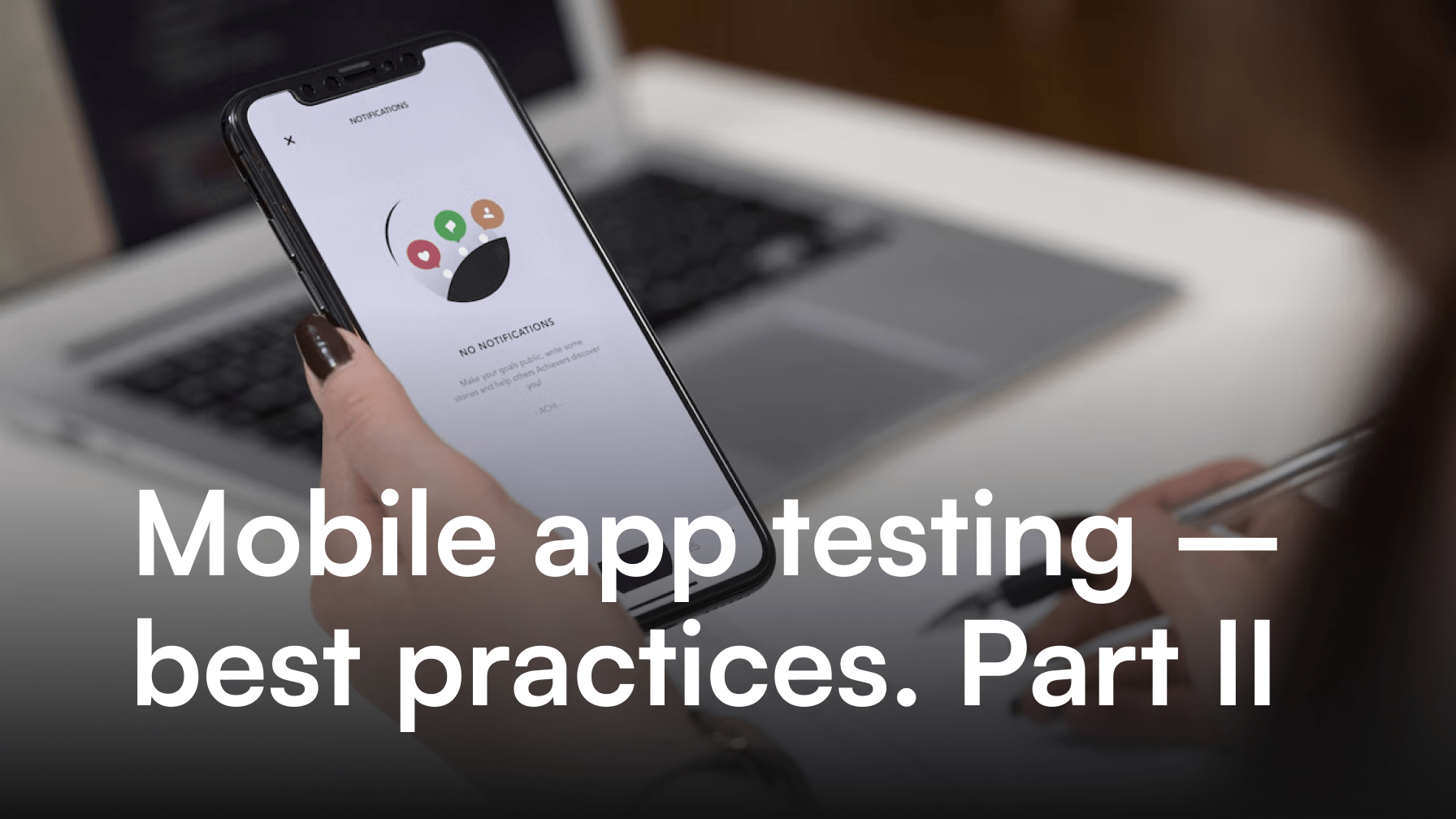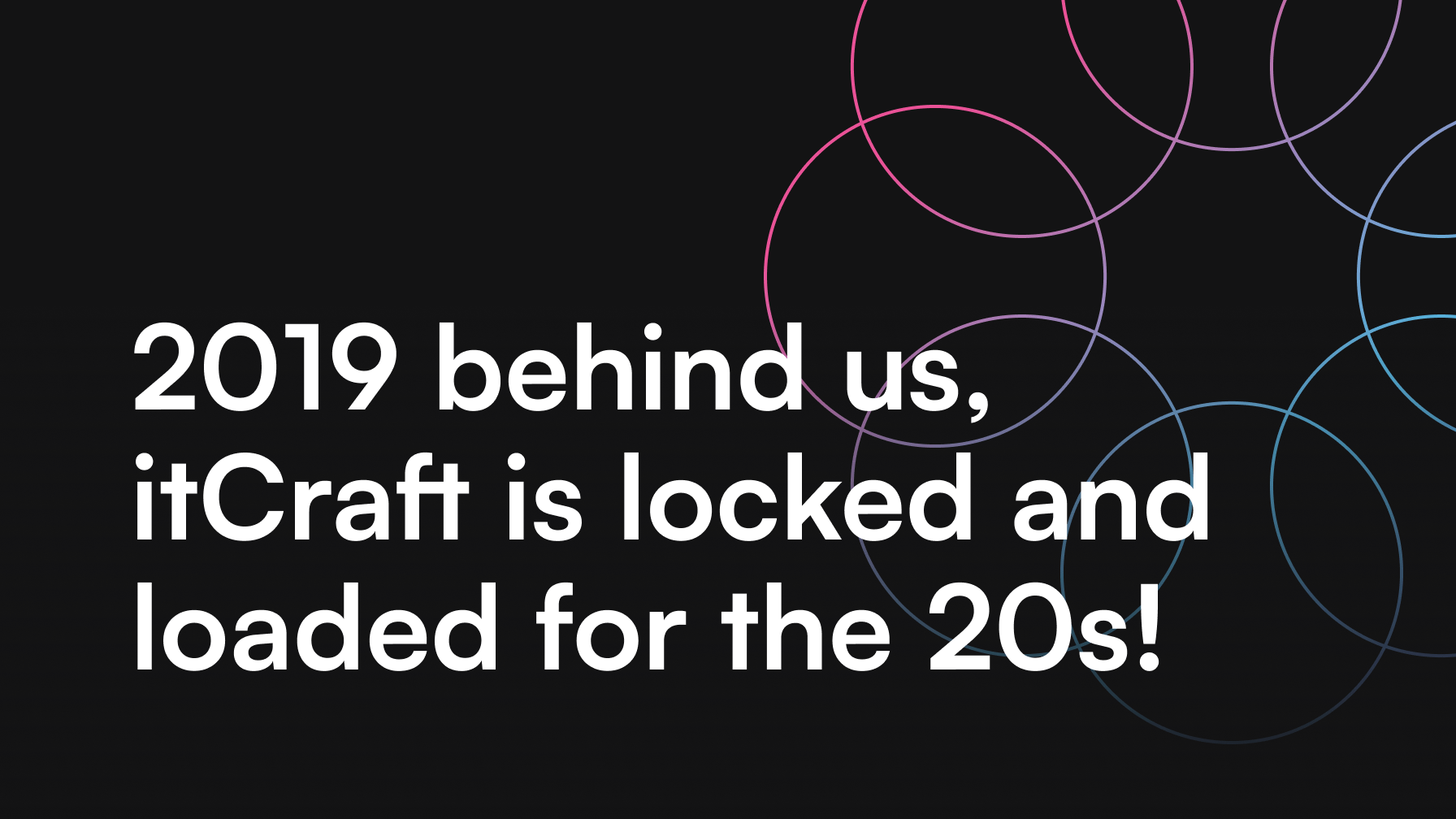Mobile app testing – best practices. Part II

Jakub Turkowski

A rock-solid, stable, and reliable mobile app is what you need to engage your target audience. As we have shown in the first part of mobile app testing, there are challenges along the way for the QA team. As mobile app testing is a vast topic, we need to tell you more about types of mobile application testing. This article will cover the field of the types of mobile app testing. Briefly, there are many tests to perform to test the overall health of a mobile app. Of course, these are among the best practices in mobile app testing. And that’s what you will find here. Buckle up and let’s go.
Table of contents – Types of mobile app testing
1. Functional testing of mobile app
2. Regression testing of mobile app
3. Integration testing of mobile app
4. Usability testing of mobile app
5. Security testing of mobile app
6. Compatibility testing of mobile app
7. Conclusion
Types of mobile app testing
Delivering a flawless mobile app is not a walk in the park. It takes a lot of time and serious skills to perform all the tests. Have you ever wondered what happens behind the scenes in terms of quality assurance? Well, there’s a plethora of processes and procedures. Let’s take a look at types of mobile app testing now.
Functional testing of mobile app
It sounds elementary – it’s about testing the overall functionality of a mobile app. But the truth is that it’s a complex process. The QA engineer has to determine if a particular piece of software is actually acting in accordance with the requirements. These requirements are pre-determined. However, the engineer does not know the internal system logic. So, the functional testing is about validating if everything works as it should be. What is worth mentioning, there are also different types of functional testing. See them below.
- Unit testing
In this type of functional testing, the developers have to write scripts, that check if the individual units or components of a software (yes, mobile application) match the requirements. Basically, it’s about creating scripts that call the methods in each piece of mobile app and validate them when they return values. These values have to match the requirements. Oh, and one more thing – code coverage is mandatory here (line coverage, method coverage, and code path coverage).
- Smoke testing
This one is also called build verification testing. It’s a preliminary check of the mobile application after a build is done, but before the release. Smoke testing is crucial in terms of ensuring the software works (most vital functions) but without getting deeper into the details. Briefly, this functional testing is about checking the stability and detecting any anomalies in that field.
- Sanity testing
This one is usually conducted after the smoke testing. Even though it sounds serious, it’s rather simple – it is performed to see if the major functionalities of a mobile app work properly. The sanity testing determines if the build can proceed. So, this type of functional testing can be perceived as a checkpoint.
Regression testing of mobile app
Every developer knows that changes in the software translate to an issue – namely, emergence of old bugs. Of course, changes to the code base are inevitable. And it is crucial to check if any modifications of the code base disrupt the existing functions or if they trigger any instability in the app. Typically, the regression testing is about writing a test for a known issue (and this is where experience is priceless) and re-running the test after implementation of any change.
Integration testing of mobile app
A mobile application should work like a charm. You know, it’s like a LEGO bricks construction – they have to fit perfectly. Sure, the LEGO bricks are designed that way, but mobile app modules are far more complex in structure. That’s why the integration testing is another important phase in the software development cycle. This stage helps ensure that the mobile app modules operate according to expectations – in terms of individual operating and with other modules. The system’s end-to-end outcome has to meet the high standards.
Usability testing of mobile app
You’ve probably heard about this one – it’s also called beta testing. In this stage, the real users have the opportunity to try the product and provide feedback. This is also one of the most significant stages (yes, each stage is crucial) as it not only shows if the future customers feel comfortable with the product and its interface. It also helps to determine if there is a need to design and implement changes. Your new mobile app has to take the market by the storm. If the users don’t fall in love with your digital product, you lose profit.
Security testing of mobile app
It appears that we don’t have to introduce that one. Security is our priority – and it is also to the users. Data leaks are something that just should not happen. Sure, the human factor is a thing that goes beyond the power of developers, but they still can do their magic in other fields. Well, we have the experts here, so your new mobile app will have the top-notch protection in the aspects of software & system architecture, as well as of client-server communication. Worry not, our combined experience goes beyond a lifetime of a few human beings.
Compatibility testing of mobile app
No matter if your vision is about a native mobile app or a hybrid solution, our pros will test them on different real devices. This stage is about ensuring that your new mobile app works great – as expected – across various mobile devices and browsers. It’s as simple as that.
Conclusion
You see now, the work of a quality assurance engineer is very complex. The days when a mobile app was simple, are gone now. We have the voice recognition, gesture testing, offline mode, and dozens of other factors that have to be considered during software development and testing. Now you know what types of testing have to be performed. Stay tuned, we’re going to tell you more about the best practices in the final part of this series. And by the way – you got a project?
Read also
Mobile app testing – best practices. Part I
Mobile app testing – best practices. Part III
How mobile applications are fueling digital transformation
What is a mobile app?






